Spring Marlborough • Directors’ Picks
The Paradise City Arts Festival in Marlborough, Massachusetts showcases 175 of the “best-of-the-best” of America’s most exciting independent artists, designers and master craft makers. This March, dozens of remarkable artists were selected to exhibit here for the very first time.
The brand-new exhibitors in this show selected for the Directors’ Picks feature four intriguing new artists, all of whom deserve recognition for their accomplishments. Meet an innovative jeweler from Indiana, a master of stained glass from Massachusetts, a botanical painter from Vermont, and a basket maker from Maine. They all look forward to exhibiting March 17, 18 & 19 at the Royal Plaza Trade Center.

 Thanks to its most common staging location – the church – stained glass can sometimes feel ponderous and solemn. Not to Kate Gakenheimer. “I am always trying to cram as many colors and designs as possible into each of my panels,” says the Cambridge, Massachusetts-based artist. Her work is dense, layered, dynamic, and most of all, fun! Her glass takes inspiration from astoundingly diverse sources; a keen eye will pick out nods to gingham patterns, Southwestern American tile work, the textiles of Japanese kimonos, and even, she says, the artwork of 19th century botanist Ernst Haeckel. (Haeckel, for the curious, was a zoologist and fantastic illustrator whose work is lush and deeply patterned.) Her work combines kaleidoscopic collisions of shape and color with a Mondrian-like geometry.
Thanks to its most common staging location – the church – stained glass can sometimes feel ponderous and solemn. Not to Kate Gakenheimer. “I am always trying to cram as many colors and designs as possible into each of my panels,” says the Cambridge, Massachusetts-based artist. Her work is dense, layered, dynamic, and most of all, fun! Her glass takes inspiration from astoundingly diverse sources; a keen eye will pick out nods to gingham patterns, Southwestern American tile work, the textiles of Japanese kimonos, and even, she says, the artwork of 19th century botanist Ernst Haeckel. (Haeckel, for the curious, was a zoologist and fantastic illustrator whose work is lush and deeply patterned.) Her work combines kaleidoscopic collisions of shape and color with a Mondrian-like geometry.
Gakenheimer’s background includes an art history degree from Boston University; a diploma in preservation carpentry from the North Bennet Street School; and finally a shift to the study of stained glass, where she has thrived ever since. She created the triple-hung windows at Julia Child’s former home in Harvard Square, restored multiple Louis Comfort Tiffany and John LaFarge windows and worked on the restoration of the Sarah Wyman-Whitman windows at historic Trinity Church in Boston.
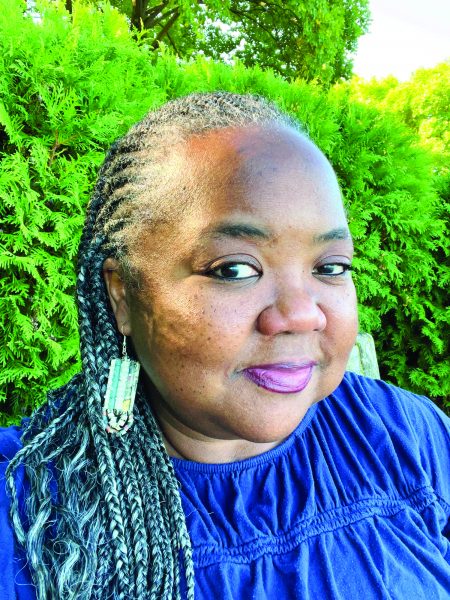
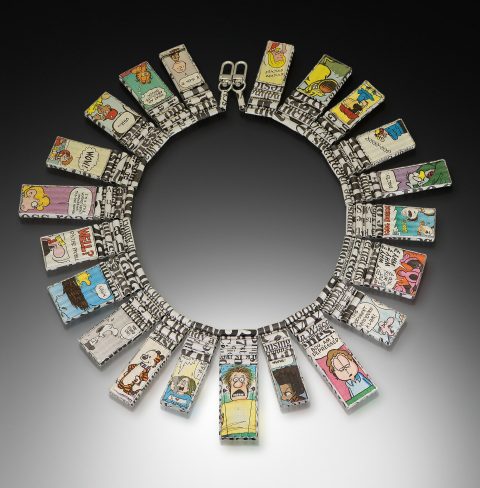 Jewelry comes with no material requirements. A necklace of found shells is as much a necklace as one made of diamonds. To Indianapolis artist Holly Anne Mitchell, the venerable broadsheet newspaper is both inspiration and raw material for her Newspaper Jewelry collection. Her quirky and eco-friendly jewelry – bracelets, brooches, necklaces, earrings, cufflinks – is made up of beads formed from various sections of newspapers.
Jewelry comes with no material requirements. A necklace of found shells is as much a necklace as one made of diamonds. To Indianapolis artist Holly Anne Mitchell, the venerable broadsheet newspaper is both inspiration and raw material for her Newspaper Jewelry collection. Her quirky and eco-friendly jewelry – bracelets, brooches, necklaces, earrings, cufflinks – is made up of beads formed from various sections of newspapers.
The idea originally came from an assignment Mitchell tackled while studying metalsmithing at the University of Michigan. As if in a competition reality show, Mitchell was tasked with creating jewelry without the use of any traditional jewelry-making materials. No gold, no silver, no gems. It was the newspaper which caught her eye. “I chose the Chicago Tribune newspaper comic strips because of their bold, vibrant color patterns and the character’s facial expressions,” she says. Those snapshots of Doonesbury, Cathy (ack!), and others were soon joined by visually stimulating cut-outs from the crossword, stock listings, and even coupons. The coupons are expired, though we don’t expect anyone to attempt to use Mitchell’s charming and sophisticated jewelry to score 10% off a 12-pack of paper towels. After she forms the beads, the paper is sealed and protected by a non-toxic, moisture-resistant coating.
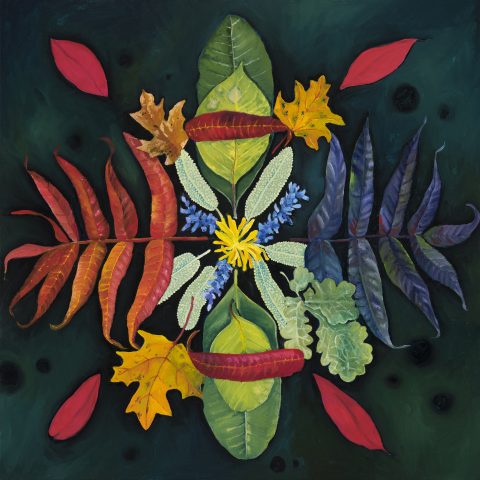
 Vermont painter Margaret Shipman is deeply inspired by her New England home and its habitats. To those from other regions and countries, Vermont may conjure images of snowy mountains, ski slopes, and foreboding forests; Shipman knows better. Her art, using traditional oil paints and canvas, is a tangle of life, a dreamscape of wildflowers, evergreen sprigs, and even weeds. Weeds, in her hands, change from an annoyance or an afterthought into the star of the show, their colorfully veined leaves and spiky stems honored just as much as any flower.
Vermont painter Margaret Shipman is deeply inspired by her New England home and its habitats. To those from other regions and countries, Vermont may conjure images of snowy mountains, ski slopes, and foreboding forests; Shipman knows better. Her art, using traditional oil paints and canvas, is a tangle of life, a dreamscape of wildflowers, evergreen sprigs, and even weeds. Weeds, in her hands, change from an annoyance or an afterthought into the star of the show, their colorfully veined leaves and spiky stems honored just as much as any flower.
“Learning about the traditional medicinal qualities of the plants in our landscape as well as their place in folklore motivates me to find out more,” says Shipman. She has a degree in Cultural Anthropology and often paints herbs and plants important to the Indigenous people of the Americas, like cattail, lavender, and nettle. Plants are typically the focus of her work, but birds and insects occasionally find their way into her paintings. “My style is based in 19th century and older botanical drawings, but it ventures into folk art and surrealism, too,” says Shipman. She sometimes incorporates handwritten botanical notes, and often bases her designs on mandalas. She lives, as you might guess, in a 200-year-old farmhouse surrounded by abundant nature.
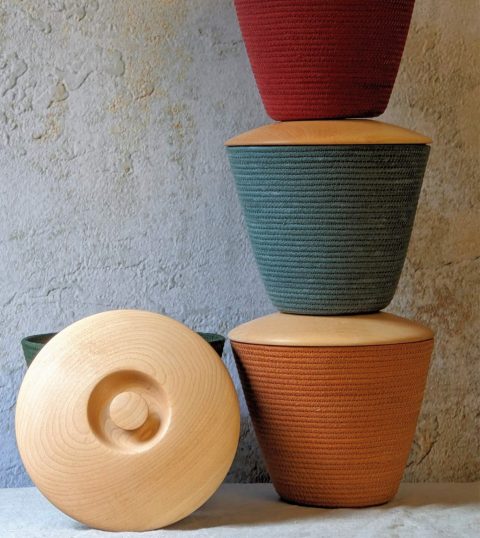
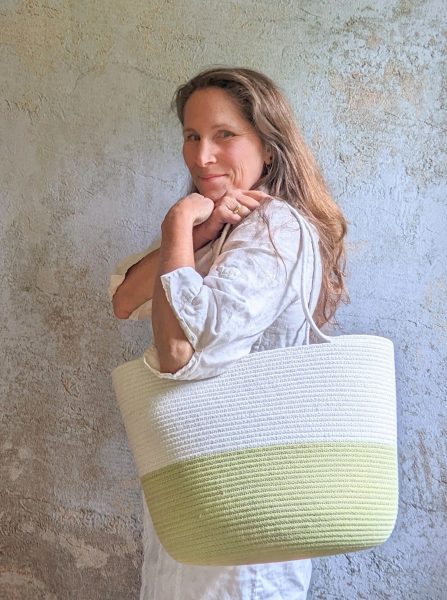 Gallit Cavendish was a professional chef when a farmer walked into her restaurant looking to sell his beautiful vegetables. She says, “Not only did I love the produce, but I fell in love with the farmer as well. Shortly after, I left behind my chef job, moved onto the farm, got married, and started a family.” And a new career! Cavendish’s Loveline Baskets are made of 100% cotton cord, hand dyed and sewn into a variety of shapes and sizes. Her dyes include vegetables grown on their farm and berries and flowers that she grows or forages locally. Colorful and functional, they can hold linens, go to the beach, gather flowers and vegetables from the garden or farmer’s market, and some even come with gorgeous wooden lids.
Gallit Cavendish was a professional chef when a farmer walked into her restaurant looking to sell his beautiful vegetables. She says, “Not only did I love the produce, but I fell in love with the farmer as well. Shortly after, I left behind my chef job, moved onto the farm, got married, and started a family.” And a new career! Cavendish’s Loveline Baskets are made of 100% cotton cord, hand dyed and sewn into a variety of shapes and sizes. Her dyes include vegetables grown on their farm and berries and flowers that she grows or forages locally. Colorful and functional, they can hold linens, go to the beach, gather flowers and vegetables from the garden or farmer’s market, and some even come with gorgeous wooden lids.
Cavendish says, “In its purest form, a basket is a vessel to hold the artifacts of our lives. The tradition of basket making is nearly as old as humankind and as a maker, my place in this long history resonates deeply within myself.” She carries on this tradition with style and flair.